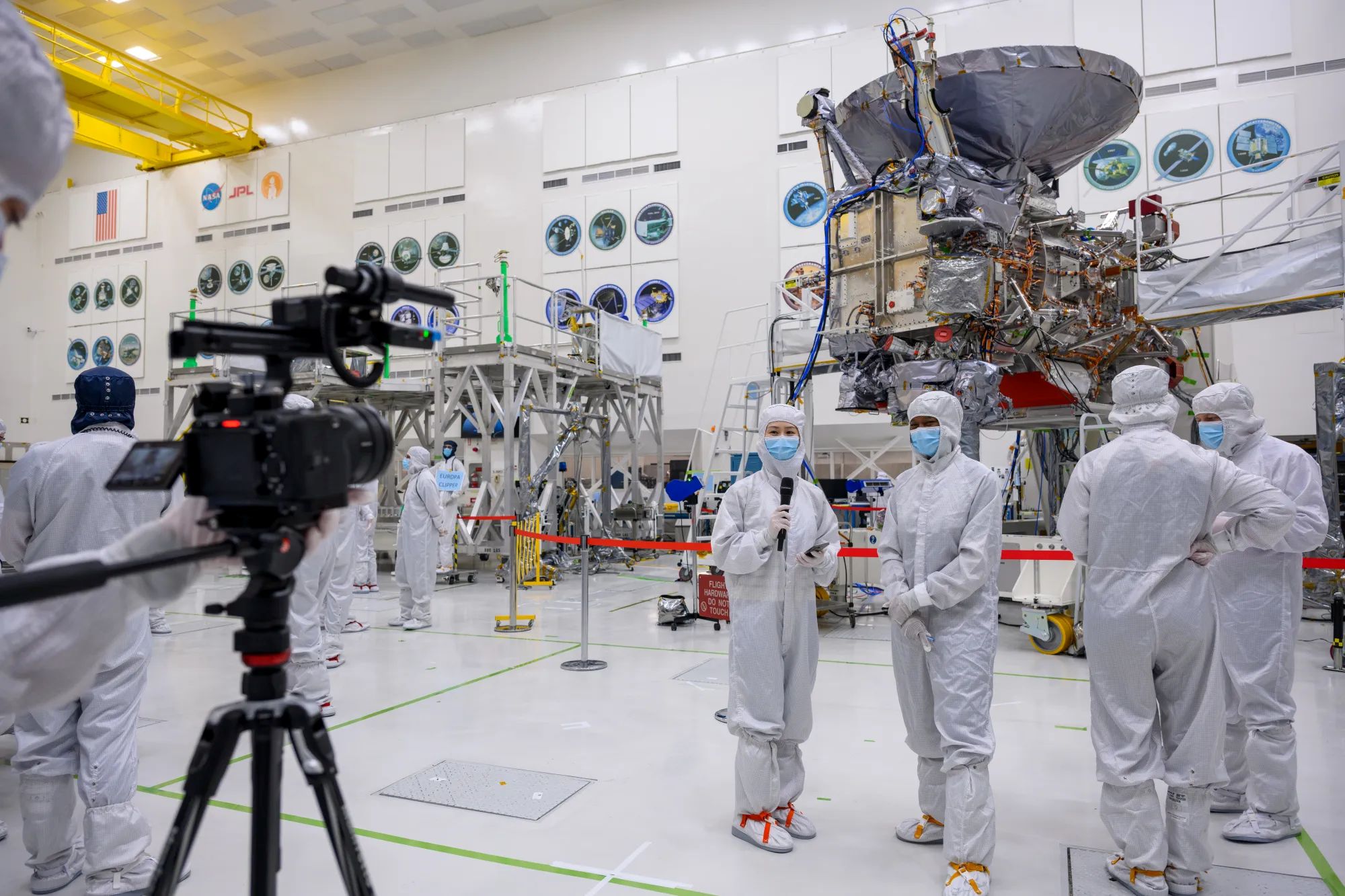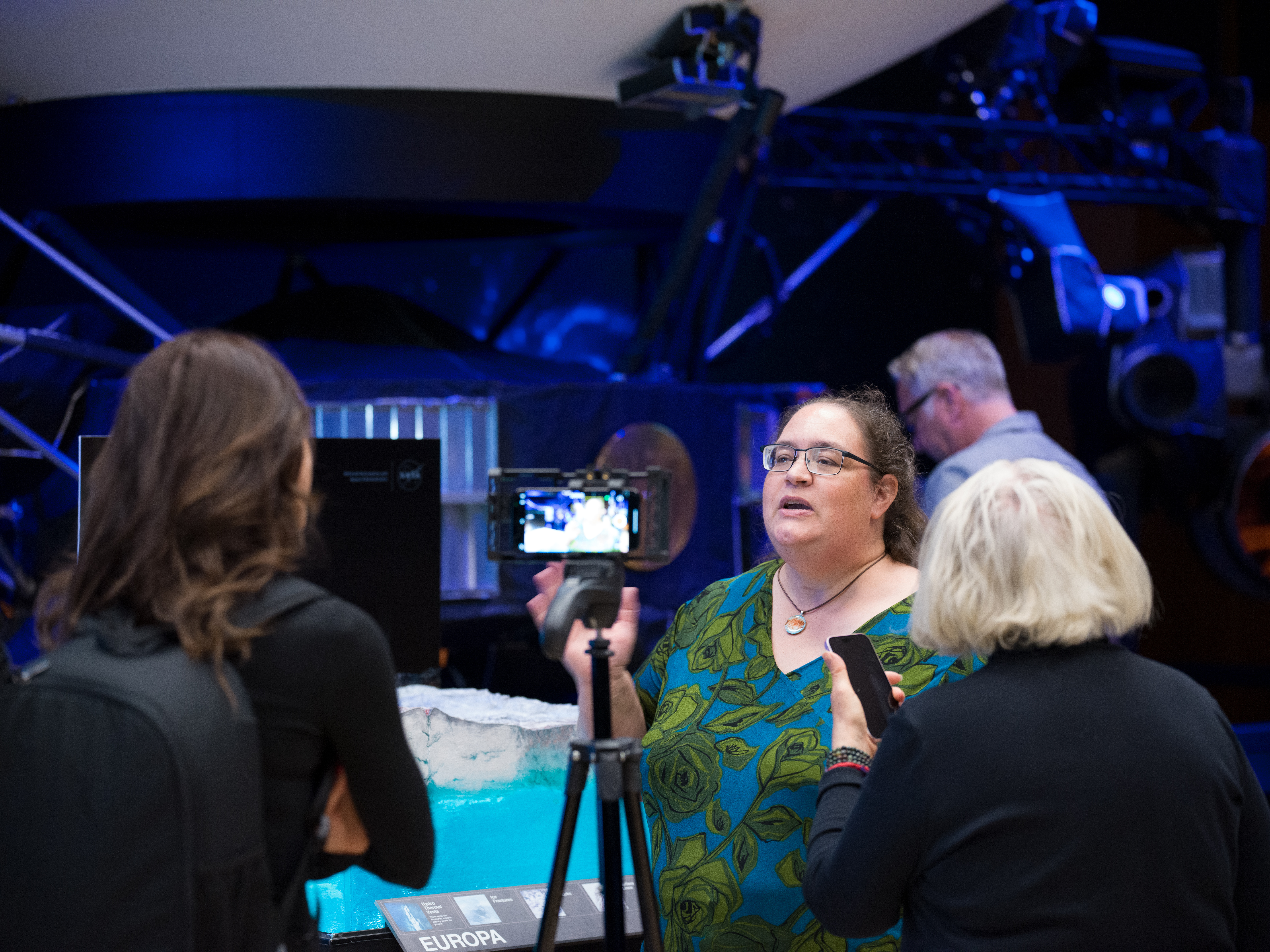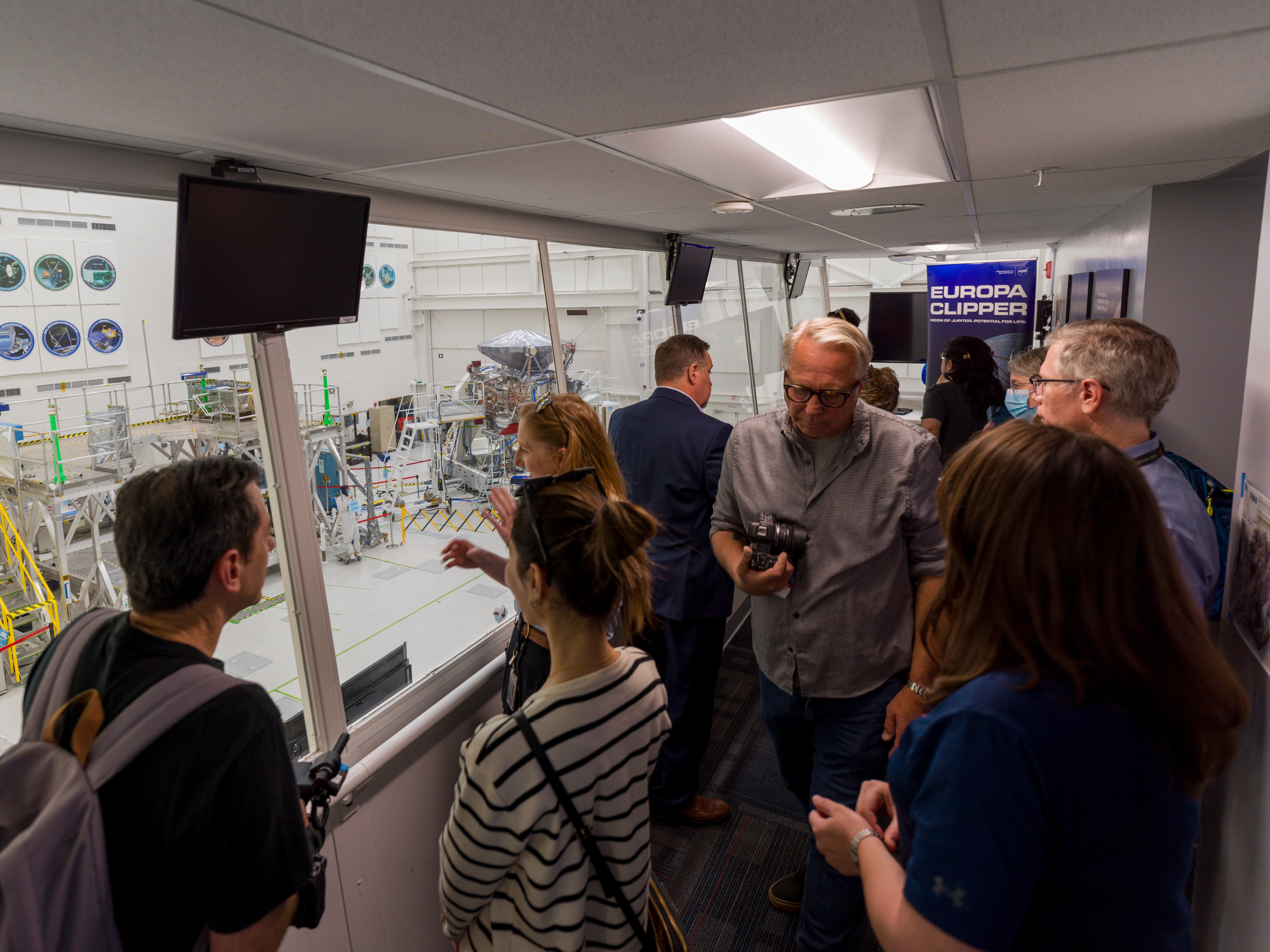Media Get Close-Up of NASA’s Jupiter-Bound Europa Clipper

Excitement is mounting as the largest spacecraft NASA has ever built for a planetary mission gets readied for an October launch.
Engineers at NASA’s Jet Propulsion Laboratory in Southern California are running final tests and preparing the agency’s Europa Clipper spacecraft for the next leg of its journey: launching from NASA’s Kennedy Space Center in Florida. Europa Clipper, which will orbit Jupiter and focus on the planet’s ice-encased moon Europa, is expected to leave JPL later this spring. Its launch period opens on Oct. 10.
Members of the media put on “bunny suits” — outfits to protect the massive spacecraft from contamination — to see Europa Clipper up close in JPL’s historic Spacecraft Assembly Facility on Thursday, April 11. Project Manager Jordan Evans, Launch-to-Mars Mission Manager Tracy Drain, Project Staff Scientist Samuel Howell, and Assembly, Test, and Launch Operations Cable Harness Engineer Luis Aguila were on the clean room floor, while Deputy Project Manager Tim Larson, and Mission Designer Ricardo Restrepo were in the gallery above to explain the mission and its goals.





Planning of the mission began in 2013, and Europa Clipper was officially confirmed by NASA as a mission in 2019. The trip to Jupiter is expected to take about six years, with flybys of Mars and Earth. Reaching the gas giant in 2030, the spacecraft will orbit Jupiter while flying by Europa dozens of times, dipping as close as 16 miles (25 kilometers) from the moon’s surface to gather data with its powerful suite of science instruments. The information will help scientists learn about the ocean beneath the moon’s icy shell, map Europa’s surface composition and geology, and hunt for any potential plumes of water vapor that may be venting from the crust.
“After over a decade of hard work and problem-solving, we’re so proud to show the nearly complete Europa Clipper spacecraft to the world,” said Evans. “As critical components came in from institutions across the globe, it’s been exciting to see parts become a greater whole. We can’t wait to get this spacecraft to the Jupiter system.”
At the event, a cutaway model showing the moon’s layers and a globe of the moon helped journalists learn why Europa is such an interesting object of study. On hand with the details were Project Staff Scientist and Assistant Science Systems Engineer Kate Craft from the Johns Hopkins Applied Physics Laboratory in Laurel, Maryland, and, from JPL, Project Scientist Robert Pappalardo, Deputy Project Scientist Bonnie Buratti, and Science Communications Lead Cynthia Phillips.
Beyond Earth, Europa is considered one of the most promising potentially habitable environments in our solar system. While Europa Clipper is not a life-detection mission, its primary science goal is to determine whether there are places below the moon’s icy surface that could support life.
When the main part of the spacecraft arrives at Kennedy Space Center in a few months, engineers will finish preparing Europa Clipper for launch on a SpaceX Falcon Heavy rocket, attaching its giant solar arrays and carefully tucking the spacecraft inside the capsule that rides on top of the rocket. Then Europa Clipper will be ready to begin its space odyssey.
More About the Mission
Europa Clipper’s three main science objectives are to determine the thickness of the moon’s icy shell and its surface interactions with the ocean below, to investigate its composition, and to characterize its geology. The mission’s detailed exploration of Europa will help scientists better understand the astrobiological potential for habitable worlds beyond our planet.
Managed by Caltech in Pasadena, California, JPL leads the development of the Europa Clipper mission in partnership with the Johns Hopkins Applied Physics Laboratory (APL) for NASA’s Science Mission Directorate in Washington. APL designed the main spacecraft body in collaboration with JPL and NASA’s Goddard Space Flight Center in Greenbelt, Maryland. The Planetary Missions Program Office at NASA’s Marshall Space Flight Center in Huntsville, Alabama, executes program management of the Europa Clipper mission.
Find more information about Europa here:





